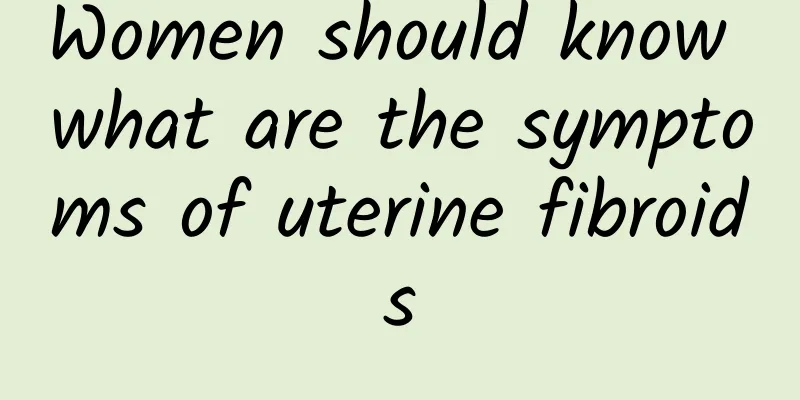Common types of pelvic effusion

|
After the physical examination, it was discovered that the following was clearly written on the physical examination form: "Pelvic effusion"! This physical examination result scared many women, and they rushed to the hospital for further examination, only to find that it was a false alarm! In fact, pelvic effusion is divided into two types: pathological and physiological. Physiological pelvic effusion generally disappears automatically and does not require treatment, while pathological effusion is generally caused by gynecological inflammation and requires timely treatment. It is understood that the pelvic cavity is the lowest position of the abdominal cavity in the whole body. Therefore, when there is exudate or leaked fluid, it will flow into the pelvic cavity and form effusion. Some healthy women will have a small amount of effusion accumulated in the pelvic cavity during menstruation or ovulation, which is a normal physiological phenomenon. Sometimes it is even a sign that the female fallopian tube is unobstructed, so there is no need to worry too much or treat it. In clinical practice, most pathological pelvic effusions are caused by inflammation. If not treated in time, the condition will become more serious. When it is difficult to treat with drugs, surgical treatment can only be adopted. Pathological pelvic effusion often occurs after pelvic effusion, adnexitis or endometriosis, and the occurrence of gynecological inflammation is closely related to the patient's bad hygiene habits, such as having sex during menstruation or within one month after childbirth; taking a bath within one month after gynecological surgery; infection caused by artificial abortion or induced labor; chronic infection lesions, etc. Therefore, if you want to prevent pathological pelvic effusion, you must start by changing these bad habits. 1. Sexual life should be hygienic After sexual intercourse, you should urinate or clean in time to prevent vaginitis from spreading to the pelvic cavity and causing pelvic effusion and adnexitis. 2. Treat inflammation early If you suffer from acute internal genital inflammation, you should receive timely and effective treatment to prevent it from becoming chronic and causing fluid accumulation. 3. Pay attention to gynecological examinations Female friends should develop the habit of regular gynecological examinations so that if there are any problems, they can be discovered and treated in time! 4. Pay attention to physical exercise Exercise, strengthen your physical fitness, increase nutrition, pay attention to the combination of work and rest, and improve the body's resistance. 5. Pay attention to personal hygiene Maintain good personal hygiene, especially during menstruation, pregnancy, delivery and postpartum period to prevent infection. 6. Prohibit the abuse of antibiotics and anti-inflammatory drugs The misuse of antibiotics can cause an imbalance in the vaginal flora, change the vaginal environment, and provide a breeding ground for bacteria, eventually leading to an attack of local candidal vaginitis, which in turn causes the secretion of inflammatory fluid and pelvic effusion. |
<<: What are the hazards of candidal vaginitis to patients
>>: Classification of causes of pelvic effusion
Recommend
Get up early and do back slimming exercises for 1 minute to easily have a beautiful back
After pressing the alarm clock every morning, rem...
The low temperature in winter causes cold hands and feet, you must know the 8 reasons! Nutritionist Zhang Yizhen: Supplementing 4 nutrients will warm you up from head to toe
When the temperature drops in winter, many people...
"B" walks away with fat! 3 foods that increase metabolism and help burn fat
With the arrival of the cold wave and the sudden ...
Which hospital is good for pelvic peritonitis?
Under the threat of gynecological diseases, femal...
Tell you some diagnostic methods of ectopic pregnancy
At present, ectopic pregnancy is a disease that, ...
Is it more effective to lose weight in winter than in summer? This is the key reason! Master the 5 dietary principles and lose weight easily
Is it more effective to lose weight in winter tha...
Eating rice properly can help you lose weight and get rid of your beer belly easily
Boys are most afraid of a "beer belly",...
Eating a concentrated starch dinner will accelerate the secretion of leptin and make people lose weight faster?
Should you eat starch during weight loss? How to ...
Will painless abortion cause infertility?
Will painless abortion cause infertility? Painles...
What are the symptoms and causes of cervical erosion? Detailed explanation of the causes and manifestations of cervical erosion
Cervical erosion is a gynecological disease that ...
What causes thick endometrium?
There are many reasons for thick endometrium, the...
Is yoga suitable for you? Or Pilates? Understand the professional analysis at one glance!
There are two major schools of fitness, which one...
Is the endometrial thickness of 2.5 cm serious?
Whether an endometrial thickness of 2.5 cm is ser...
What are the precautions after abortion and who cannot have an abortion?
After a miscarriage, women should actively take c...
Attention should be paid to daily care of patients after abortion
After abortion, the patient is weak and has low r...









